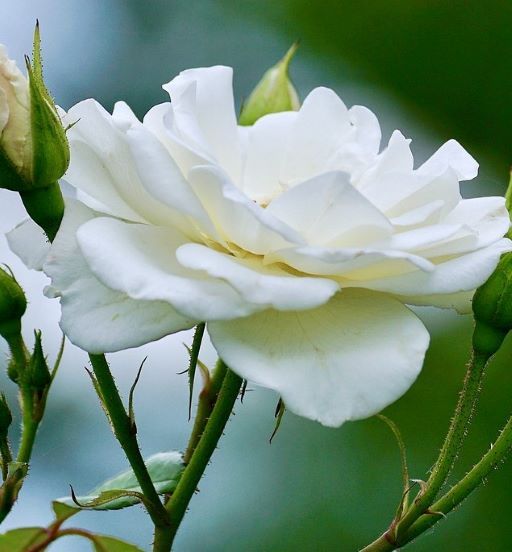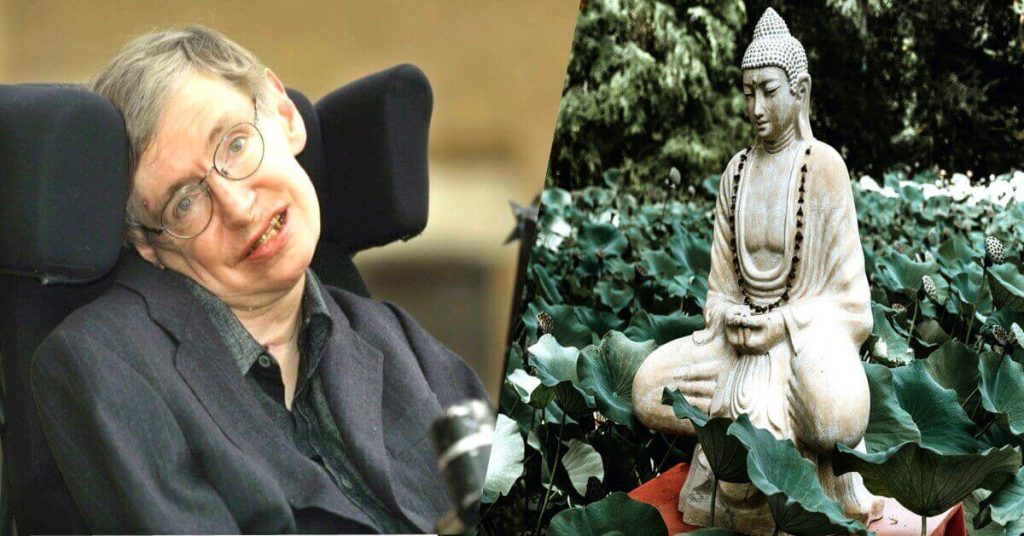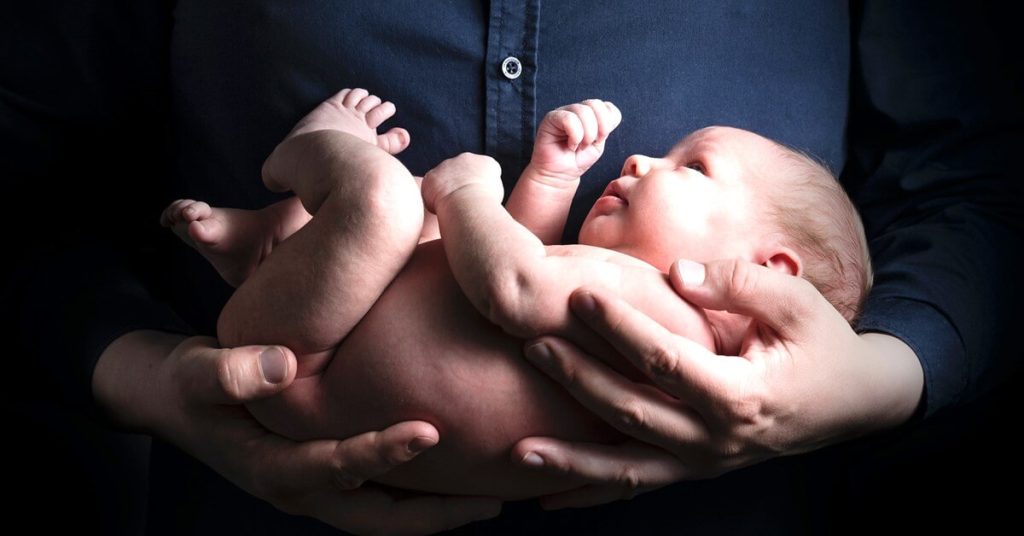Last updated on January 4th, 2024 at 01:51 pm
On Valentine’s day, our lovely wounds caused by Cupid’s arrow become refreshed, and our desiccated heartland turns fecund.
No matter who we are or how we are, Cupid’s arrow is bound to penetrate our hearts at least once in a lifetime and bind us in a bond that knows no bounds of desire. Only then do we realise that love is blind and irrational in its very nature.
This is my Valentine’s Day thought encompassing love, romance, the history of roses in regard to Valentine’s day and some love quotes.
The pricelessness of love
A lovely feeling of love fills the air.
The utopic and euphoric senses of sensory organs create a new world where everything all of sudden seems eternally symmetric and sensible.
Nature sings to you, frailties of flesh and mind feel the joy of victory, scarcity becomes a secondary objective, adversity generates strength, the heart explodes with beauty and truth, the music turns into a heartbeat while poetry seems primal objective of expression.
However, just as love is a fatal thing to desire, it’s a blissful matter to conquer the unconquerable. When in love, all things make sense. Every chaos feels like an integral incidence of transforming ugliness into majesticity. Every aspect and attribute of a life is dedicated to beautifying the existence of two bonded beings.
Purpose, aim, motivation, dedication, sympathy, and charity spread all around as long as love binds us in the lovely hope.
Accordingly, a lover and beloved’s romantic struggle with love for survival is initiated.
Leaving aside the neurological and psychological fact of habituation, the hope and expectation of peace and living together and dying together continues, along with psychological, social and economic adversities. “All hope to be happy, yet only a few are lucky to have that, who knows whether what folks say of it is true” of the eminent singer of the subcontinent appears vivid.
To some the spring comes late, to others, it reappears and revisits on every Valentine’s Day making it a true occasion to celebrate their luck of finding it. Many are still there who get lucky to find love even after their marriage. In the ‘arranged marriage’ setting many do not get or intentionally take advantage of the chance of falling in love to sustain the requisites of chastity. But the feelings of falling in love are always peerless.
When married men or women realised that whom they have married is not the man or woman of their dream, they explore to know how it feels to be loved by someone else.
Gabriel García Márquez writes, “The problem with marriage is that it ends every night after making love, and it must be rebuilt every morning before breakfast.” In the emerging unbridled globalisation, the ‘rebuilt’ talk never hardly takes place when desperation for love of consummated body remains unmet and uncared for.
The problem with marriage is that it ends every night after making love, and it must be rebuilt every morning before breakfast.
Some people remain so loyal to their first spring that brings love that it hardly ever reappears to them. Once a lover or beloved is broken-hearted it leaves an irreparable damage to the heart. Abandoned or rejected lovers many times live their lives in hopelessness and with a sense of betrayal. C.S. Lewis says, “To love at all is to be vulnerable. Love anything and your heart will be wrung and possibly broken”. Oscar Wild tells, ‘Hearts made to be broken”.
To love at all is to be vulnerable. Love anything and your heart will be wrung and possibly broken.
C.S Lewis, Love qoute
Yet, the broken ones sing with Sandhya Mukhopadhyay, “What meaning is there laying on the bed made of sandalwood, if you were not there in my life, what purpose of life is there to be able live in the palace made of white stones if you were not there in my life”
Chinese philosopher and writer Lao Tzu said, “Being deeply loved by someone gives you strength while loving someone deeply gives you courage.”
Since the Covid-19 epidemic, which started in November 2019, 6 million-plus (6,095,500) people died worldwide by the time the world is getting ready to celebrate 2021 Valentine’s Day. Numerous hearts broke, many relationships estranged, and many affairs suffered separation. And yet, there are still some indomitable souls who seconded their lives over love by defying the obstacles brought forth by the deadly coronavirus.
Being deeply loved by someone gives you strength while loving someone deeply gives you courage.
Lao Tzu, love quote.
Andrew and Rosanna are two of them who made it up to themselves to be united from thousands of miles apart. Andrew Monck from Australia left his home country permanently amid the pandemic to be with his beloved Rosanna Wilson in the UK. A relationship of ten years finally found its reason to flourish. Love and romance could not have been stopped because of covid-19. A chance of our survival and Valentine’s demise constantly reminds us of love to love, to be in love irrespective of inimical circumstances.
Love and the lovers of immortality
Love is the strongest illusion in the world that takes precedence over duty, responsibilities, ability and eligibility.
It is, most probably the strongest motivational force that helps lovers and beloved transcend all the earthly realities. The American writer O. Henry his ‘The Gift of the Magi’ shows how compelling and altruistic love between Jim and Della can be. Della sold her beautiful long hair to buy her husband Jim a chain for his wristwatch, while in secrete he sold his watch to buy her a comb to comb her beautiful hair. Eventually, they both realised that the gifts they bought would not serve their purposes as Della had no hair and Jim had no watch.
Love compels us to be selfless, but sacrificial.
Often referred to as the “Descartes of the twelfth century”, and considered a forerunner of Rousseau, Kant, and Spinoza, Peter Abelard, the French scholastic philosopher, did not only lost his beloved Héloïse but also his manhood in castration. During his study and stay in the great cathedral school of Notre-Dame de Paris, he met Heloise, the nun.
Fell in love Abelard pursued her in her uncle Fulbert’s house. They continued their meeting secretly even after Fulbert’s discovery of their affair. Angry Fulbert sent her to Britany to be looked after as she was already with a child. However, to mend the relationship with Fulbert Abelard proposed her to marry him. But their marriage remained a secret affair considering his career as a philosopher.
In an attempt to rescue Heloise from her uncle’s wrath and oppression that ensued because of her relationship with Abelard, he sent her to a convent from her uncle’s house.
Infuriated Abelard sent a band of men into his room to attack him because he thought Abelard took Heloise to the convent in order to dispose of her. They castrated him. For the rest of his life, Abelard dedicated his life to learning as a monk, while Heloise died remaining single, as a nun.

Valentine’s demise is remembered every year to recall how beautiful and fatal love is.
“Love is the only shocking act left on the planet”, says the protagonist of the film Valentine’s Day (2010). The Persian poet Rumi said, “All we want is love’s confusing joy”. As human beings, we actually cannot ultimately figure out whether love is the only thing we want. Love is confusing if not its feelings. Love does not bring fortune to everyone while, others just get lucky by possessing it.
Love is the only shocking act left on the planet.
Valentine’s Day (2010)
In Love, the poetry, Lebanese poet Kahlil Gibran narrates–
“For even as love crowns you so shall he crucify you; Love possesses not nor would it be possessed; For love is sufficient unto itself; Love has no other desire but to fulfill itself”.
No matter how desperate we are, love comes to fulfill its mission of loving, if we are not to take the biological necessity of procreation into consideration.
Love truly turns into a zoo when we don’t wake up to the facts demanded by mental aberration.
Notwithstanding, Valentine’s Day is here again! With people from across the world, Bangladeshis are, too, embracing it as a way to find one’s hand into someone else’s. The commercialisation of it is in the full swing. Television channels run special programmes, newspapers circulate featured articles, telecommunication companies prepare special packages, hotels, restaurants, shopping malls, and mobile companies come up with alluring offers.
But, regardless of its religious, cultural, and commercial emphasise, Valentine’s Day winning us and engulfing our age-old culturalism.
The different aspects of various cultures compounded our own into a concoction of global culture. Every celebration realises its objective to shed light on. But what purpose are we serving by ‘be my Valentine’?
The first person to celebrate it was Saint Valentine himself whose demise for love propagated Valentine’s Day the world over. The day is known as a consumer holiday, commercial holiday, the holiday of love, or lovers’ day which has become an annual event that consumers associate with certain symbolic items such as roses, cards, chocolate, and marketplace activities such as dating, and gift exchange. Whether his acts of performing the marriage to the prospective Roman soldier-couples was an act of gallantry or proselytising the young men to show an act of love of God represented in Jesus cannot be determined.
But he has been remembered in the Christian tradition with spiritual significance as one of the two most famous saints known as Valentinus who was martyred and connected on the same date: February 14.
During the third century the Roman emperor Claudius II Gothicus—known as the cruellest emperor—forbade his soldiers from marrying or so to speak, he thought married soldiers cannot make good soldiers.
But ignoring the prohibition Saint Valentine happened to solemnise the soldiers’ marriages.
Incidentally, that had happened when sharp persecution of Christianity by the emperor was on the scene. Consequently, the emperor handed him execution either for performing the marriages or for the fact that he refused the emperor’s offer to be converted to Paganism, is not a vital argument, as long as he was ready to die for the people who were in the commitment of love.
Prior to the execution, Saint Valentine was able to restore the sight of his jailer Asterius’s blind daughter, Julia. He befriended and fell in love with Julia later on. At his execution, he wrote the very first Valentine’s card to Julia signed as “Farewell, your Valentine’’.
The day can be traced back to the festival of Lupercalia which would have been celebrated in mid-February during the time. In the coming of spring, the festivity Lupercalia included fertility rites and the pairing off of women with men by lottery. But at the end of the 5th century, Pope Gelasius I replaced Lupercalia with St. Valentine’s Day.
Since then, it came to be celebrated as a day of romance from about the 14th century.
But Valentine’s Day still did not earn popularity in the western world until the 18th century. The English poet Geoffrey Chaucer described it in his poem “Parlement of Foules”. He describes the time of Valentine’s Day as a season of mirthfulness, love, and season to choose a mate.
However, or whatsoever might be the history behind Valentine’s Day, it is celebrated as a ‘day of loves’, ‘day of love and friendship’, or ‘Lovers’ day’ around the world with huge extravaganza and invitations of love, to show love, to love the unloved and to be loved by our loved ones. As asked why people are celebrating valentine’s day, the antagonist in the film ‘ Valentine’s Day ‘ says- ‘For some people love doesn’t exist until you acknowledge it in front of other people’.
The first commercial Valentine’s Day cards in the United States were printed in the mid-1800s. Valentines commonly depict Cupid, the Roman god of love, along with hearts, traditionally the seat of emotion. Because it was thought that their mating season began in mid-February, birds also became a symbol of the day.
Traditional gifts include candy and flowers, particularly red roses, a symbol of beauty and love.
History of rose: the queen of love
Roses are undoubtedly the most popular flowers when it comes to Valentine’s Day.
Roses have always been a symbol of romance, beauty, passion, and love. It remains the queen of romance. Roses were 84% of the all sold flowers in 2018, while red roses alone to be the 69 % 0f all the purchases. Apart from ‘jewellery’, being the top Valentine’s day gift item besides ‘dining out’ and ‘clothing’, Americans spent 2 billion dollars on flowers alone.
Bangladeshi flower farmers are also reported to be ready to sell nearly 3 million dollars worth of flowers during the spring festival, International mother’s language day, and Valentine’s day, on 13, 14, and 21 February respectively. Many legends are there about how the rose became a well-loved flower and symbol of love. One of such legends says that goddess Diana turned Rodanthe, who was pursued by many suitors and broke in into her house, into rose and suitor into thorns.
However, the letters of the word ‘rose’ can be rearranged into Eros, the god of love, or Eros into the rose, interchangeably.







The Greek goddess Aphrodite is also closely related to the red rose.
The second-century AD Greek travel writer Pausanias associates the rose with the story of Adonis, her earthly lover.
He wrote that the rose is red because Aphrodite (Roman Venus) wounded herself on one of its thorns and stained the flower red with her blood
In Arabian legends, it is said that a nightingale adored a white rose, and when it kissed the rose it became wounded by the thorn, and the blood turned the rose – a red rose.
According to Hindu Legend, when Brahma claimed lotus to be the most beautiful flower on earth, Vishnu invited him to his paradise and pointed to a pale, perfumed rose. There are endless myths relating to the rose.
But based on the varieties of colours, roses convey different messages. The Red rose is a symbol of love and passion; for friendship yellow; the white rose means true love and purity of mind; the pink rose represents a sweetheart; the black rose is used for farewell or death; the blue rose means mystery and the orange rose for passion. Mughal Emperor Babar introduced a rose in this subcontinent named Bashra, a highly scented, light pink-coloured variety having a weak stem, long branches, and flowers in clusters at the top.
Over time many consumer materials have become the gift-giving items along with the rose.
Because of market-driven values, Valentine’s Day gift-giving has been subject to high commercialisation.
Valentine’s Day Commercialisation
Gift giving is a process of motives and strategies; however, gifts are selected and given for objective attributes and altruistic or agonistic reasons.
The commodification of love through the marketisation of gift-giving and showing affection to loved ones has given rise to anti-Valentine’s day sentiment, for many fails to fulfil gift-giving expectations. Gift-giving is considered a way to maintain one’s influence, status and display power between individuals or communities.
Social scientists usually regard a gift as an expression of the relationship between donor and recipient. French anthropologist Marcel Mauss gifts are widely obligatory based on mutually giving and taking. Economic value has a religious origin, he says, and the utilitarian values (that benefits or satisfaction which is derived from the consumption of a commodity) of things are renounced to gain social status; therefore, ceremonial values transcend economic values.
People, for instance, in the Trobriand Isles deny their desire to eat yams and stockpile them in order to give them away and gain prestige.
While the people of Kwakiutl of the American Pacific Northwest, demonstrate a leader’s wealth and power by giving away or destroying wealth or valuable items in the potlatch, a gift-giving feast.
Gift exchange is considered a ‘‘total social phenomenon,’’ embodying economic, juridical, moral, aesthetic, religious, and mythological meanings.
Research says Valentine’s Day is traditionally a gift-giving occasion which over the years has become a worldwide phenomenon. Valentine’s Day is celebrated in more countries than other broad-based gift-giving occasions such as Mother’s Day or Father’s Day. As with most gift-giving occasions, Valentine’s Day has become extremely commercialised, with retailers seizing the opportunity to market various symbolic goods.
More recently, even the internet has been used as a source of mass marketing on Valentine’s Day.
As with most gift-giving occasions, Valentine’s Day has become extremely commercialised, with retailers seizing the opportunity to market various symbolic goods.
Even though the day is associated with meanings of affection, love, and romance, the increasing focus on commercialising material gifts and luxuries that have both market prescribed meaning and personal meaning. Valentine’s Day brings heightened commercialism and spending; U.S. consumers spent 20 billion dollars on retail goods in 2020.
The research found Cards, flowers, jewellery, plush, and candy to be universally the traditional retail exchanged gifts in the U.S.
Spa experiences, romantic travel, and other sensual indulgences, restaurants, grocers, and even pharmaceutical marketers are involved. Researchers of the University of Texas and the University of Georgia conducted a study under the title Market-Resistance and Valentine’s Day Events. They found that, despite FDA sanctions, Pfizer’s Viagra claimed to be the official sponsor of Valentine’s Day. The pharmaceutical industry acknowledges and commercialises the sexiest day of the year.
They also observed that 81% of males in a new relationship feel most obligated compared to 50% of females in a new relationship. Comparatively, less than 44% of males in a more established relationship feel obligated. A low 13 per cent of females in more established relationships feel this obligation. Moreover, according to Japanese cultural norms, only women would give men chocolates and other gifts on Valentine’s Day, until 2002.
Before that men would return generally bigger gifts to women on White Day, March 14.
Nonetheless, men are the biggest buyer of the gifts, and men in a longer-standing relationship are found to sustain positive feelings for this holiday that focuses on altruistic motives and love. But that is not the same case among young males: “the altruism motive was rarely found to occur independently amongst young males, especially with relationships that have been established for periods longer than six months.
Women in a longer relationship were more likely to share selfless giving than the women who were involved in a fairly new relationship”, says the research.
Altruistic motives are selfless in seeking and maximising pleasure for the recipient.
Because of heightened expectations, women receive more gifts than men on Valentine’s Day. The behaviour is explained in the way that women themselves to be gift-receivers more so than givers on this day. However, as per the researcher, males do view the lack of gifts received as a negative factor associated with the holiday.
The researcher found Valentine’s Day behaviour in ‘self-giving’ among women. In order to make themselves look ‘perfect’, women in a new relationship do ‘self-giving’ which includes perfumes, cosmetics and lingerie. Females speak of these self-gifts as a way to make themselves “absolutely irresistible” for their partner. The study conducted under the title A Holiday Loved and Loathed: A Consumer Perspective of Valentine’s Day by the researchers of the University of Georgia came to know of the anti-Valentine’s emotion among the singles. They say, “For some, Valentine’s Day serves as a somewhat unwelcome reminder of their “single status”.
In fact, this holiday can be a source of obligation, self-loathing, and/or disgust for various segments of the.
For some, Valentine’s Day serves as a somewhat unwelcome reminder of their “single status”.
The study found the following Valentine’s Holiday consumer behaviours and rituals specifically mentioned by informants. Only a few of them are mentioned below:
Among the exchanging gifts and cards: lighting candles, sharing chocolate anything, surprising loved ones with gifts or meaningful gestures, giving shiny or scented gifts, red roses, flowers, concert tickets, teddy bears, pearls, diamond jewellery, etc.
Among showing affection: Sex, kissing, acting sensual, slowing down, building a fire, cuddling on the couch, going on a date, romantic getaways, love-making, spending time alone, renewing vows, proposing, celebrating a romantic anniversary, getting married, etc.
Among grooming and clothing: Wearing certain colours (i.e., red, pink) of lingerie and/or clothing, wearing pretty underwear, wearing heels, wearing sexy clothes, bikini and leg waxing, getting a special hairdo, applying manicures/pedicures in pink or red, looking better than other females, applying a temporary heart tattoo, wearing extra perfume, shaving chest hair into a heart shape, etc.
Love Finds You In Valentine
If love is all aimless in the core, to quote Rumi- “The way of love is not a sublet argument, the door there is devastation”, then we are going through a real dry time of the period.
There is globalisation, financial constraints, racial prejudices, social prohibitions, ritual obstructions put in to investigate love and its affairs. Water that comes free is not free anywhere nowadays, but love that too comes at free of cost cannot be expressed freely, I mean love in the sense of procreative and romantic manner.
Love is that condition in which the happiness of another person is essential to your own.
Robert A. Heilein, American science-fiction writer.
American science-fiction author, aeronautical engineer Robert A. Heinlein wrote, “Love is that condition in which the happiness of another person is essential to your own.” Truly, the happiness of others is an essential condition of love for you to be happy. Making others happy makes our happiness an objective of love.
Therefore, love is a precondition of happiness for you or others. Finding love alone cannot make you happy if it is not directed towards the happiness of others, through repetition and renewal of it. Valentine’s demise certainly created an opportunity of renewing our commitment and vows of love and romance.
Every renewed commitment is a stronger commitment for a prolonged companionship.
Conversely, the scientific and technological revolution makes love vulnerable at its core. Are we ready for a time when only humans will remain but not the feelings of love? Let’s just think for a moment of what the West World predicts of the future of humanity. Imagine your lover or beloved has died and you are devastated. A particular website offers to sign-up with it so you can chat with the person you lost. The only thing you have to do is to register the person’s choices, the ways he/she would talk, dress and the likings.
After that, you realise that you are chatting with the person whom you lost, who chooses the same words, phrases and the style of delivery.
Out of habituation now you are thinking to listen to him over a call. You now can call and talk to him and the person will speak to you exactly the same way he did before his death. However, after quite a while you began to entertain having the voice as a real man closed to you. Now what you have to do is just to place an order. The man will be delivered on a package at your door. You assemble it and have him exactly as the man whom you have lost.
Everything is there, nothing of him is lost, except, most importantly, the feelings and sensibility.
On Valentine’s Day
Promiscuity cannot be taken as an act of love.
Having said that, observation of Valentine’s Day cannot go in vain purposing the reckless representation of mere adopting the cultural intervention if we fail to love my neighbours, my friends, colleagues, associates, children, parents and enemies. If Valentine’s demise is to be truly recalled, it must be done in order to sustain humanly endeavours over unrestrained progressions.
Christianity talks about four types of love: Storge, the parental love; Philia, the friendly love; Eros, the romantic love; and Agape, the godly love. All forms of love have to be cherished, sustained and maintained by the very characteristics of the human being. How about the love towards mother earth? I think, by realising the true purpose of Valentine’s demise through altruism we also have a scope to realise our love for nature.
Because the true sense of love is inseparable from nature and survival is impossible by alienating it from mother nature.
The symbolism of romance by Saint Valentine is truly realised once we learn not to keep it between the racy emotions of sexual preference.
Happy Valentine’s Day!






